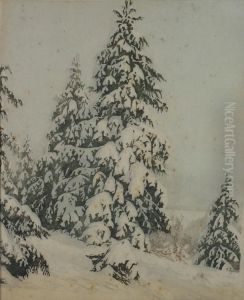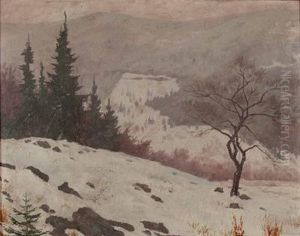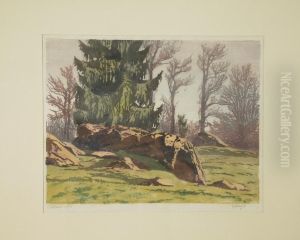Paul Leschhorn Paintings
Paul Leschhorn was a German graphic artist and illustrator known for his woodcuts and engravings. Born in 1889 in Germany, Leschhorn established himself as an important figure in the early 20th-century art scene, particularly within the realm of printmaking.
Leschhorn's work was heavily influenced by the social and political climate of his time. He came of age artistically during a period of significant upheaval in Germany, which included World War I, the Weimar Republic, and the rise of National Socialism. His art often reflected the anxieties and complexities of this era, capturing the human condition through stark, expressive lines and a clear narrative style.
Leschhorn was educated in traditional graphic techniques and honed his skills in various workshops and studios. He was a contemporary of the Expressionist artists, though he maintained his own distinct style. His work was characterized by a combination of strong craftsmanship and a poignant artistic voice, which allowed him to produce work that was both aesthetically compelling and thematically powerful.
During his career, Leschhorn produced a substantial oeuvre that included book illustrations, standalone prints, and contributions to periodicals. While his work is not as widely recognized as some of his contemporaries, it remains an important example of early 20th-century graphic art in Germany.
Paul Leschhorn's contributions to the field of printmaking continued to be appreciated by collectors and scholars of graphic arts. His legacy lives on through his prints, which continue to be exhibited and studied for their technical proficiency and emotional depth. Leschhorn passed away in 1966, leaving behind a body of work that continues to resonate with audiences for its portrayal of a turbulent period in history.


